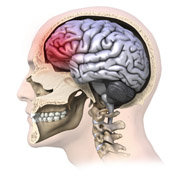Research and Innovation, UNL Office of

Center for Brain, Biology, and Behavior: Faculty Publications
Document Type
Article
Date of this Version
10-10-2013
Citation
Brain Research (October 10, 2012) 1478: 1–15
doi: 10.1016/j.brainres.2012.08.038
Abstract
Adolescence is a complex transitional period in human development, composing physical maturation, cognitive and social behavioral changes. The objective of this study is to investigate sex differences in white matter development and the associations between intelligence and white matter microstructure in the adolescent brain using diffusion tensor imaging (DTI) and tract-based spatial statistics (TBSS). In a cohort of 16 typically-developing adolescents aged 13 to 17 years, longitudinal DTI data were recorded from each subject at two time points that were one year apart. We used TBSS to analyze the diffusion indices including fractional anisotropy (FA), mean diffusivity (MD), axial diffusivity (AD), and radial diffusivity (RD). Our results suggest that boys (13–18 years) continued to demonstrate white matter maturation, whereas girls appeared to reach mature levels earlier. In addition, we identified significant positive correlations between FA and full-scale intelligence quotient (IQ) in the right inferior fronto-occipital fasciculus when both sexes were looked at together. Only girls showed significant positive correlations between FA and verbal IQ in the left cortico-spinal tract and superior longitudinal fasciculus. The preliminary evidence presented in this study supports that boys and girls have different developmental trajectories in white matter microstructure.
Included in
Behavior and Behavior Mechanisms Commons, Nervous System Commons, Other Analytical, Diagnostic and Therapeutic Techniques and Equipment Commons, Other Neuroscience and Neurobiology Commons, Other Psychiatry and Psychology Commons, Rehabilitation and Therapy Commons, Sports Sciences Commons


Comments
Copyright 2012, Elsevier. Used by permission